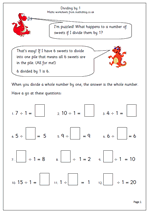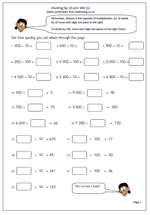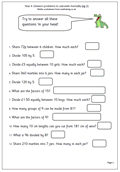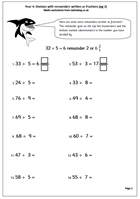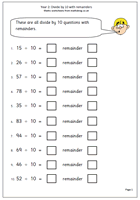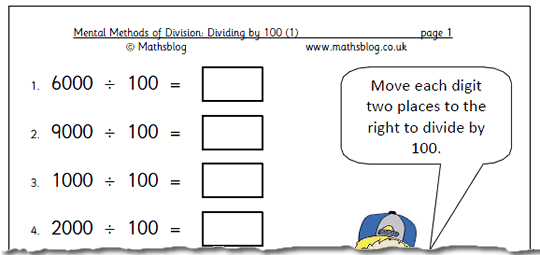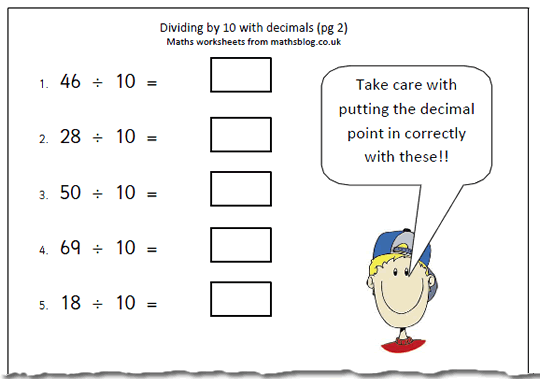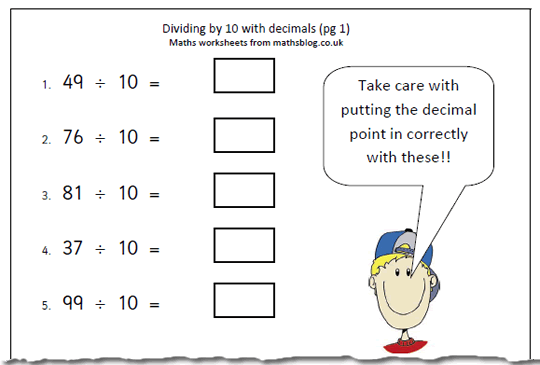Dividing by one might seem a bit obvious to us, but it is not always the case for children who don’t yet have a good understanding of division.
Dividing by 1 can be explained in two ways:
sharing equally – the sweets are shared equally between 1 person, in other words the lucky person gets the whole lot!
grouping – there are 6 sweets to be put into 1 group.
Sometimes even adults become confused with dividing by one, and the more complex idea of dividing by zero (how many zeros are there in 10 whole ones????)!
This is probably most suited to Year 3 children.
